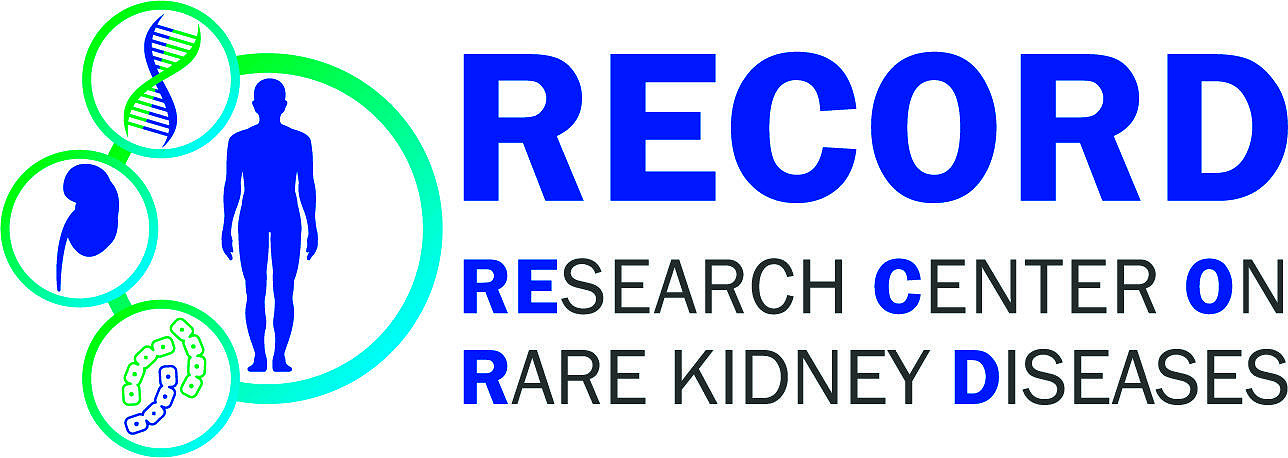 Bag3 as potential mechanoprotector in podocytes
Bag3 as potential mechanoprotector in podocytes
Wissenschaftliches Arbeitsprogramm (Abstract)
Podocyte loss is a hallmark of glomerular diseases leading to glomerulosclerosis and progression of kidney disease. Due to their exposed position on the outside of the glomerular filter podocytes have to withstand extensive mechanical stress due to perfusion and filtration. Hyperfiltration und hyperperfusion in disease states cause podocyte detachment when overwhelming mechanoprotective capacity, causing a vicious cycle of mounting strain on the remaining podocytes. However the exact mechanism of mechanoprotection in podocytes remains elusive.
Bag3 is an important mechanoprotector in many mechanical strained tissues. By inducing chaperoneassisted autophagy (CASA) it maintains the proteostasis of e.g. Filamin and Synaptopodin – indispensable for podocyte biology. Additionally, Bag3 insufficiency renders susceptibility to diabetic nephropathy in a mouse model. These findings point toward Bag3 as a candidate for mechanical stress protection in podocytes.
Recent evidence suggested that the co-chaperone Bag3 together with chaperone-assisted selective autophagy (CASA) may play an important role in mechanoprotection in podocytes.
Immunofluorescence stainings localized Bag3 to podocytes and demonstrated abundant and clustered expression. STED-microscopy revealed a localization at or close to the slit diaphragm.
Furthermore, Bag3 and the CASA complex components hsc70 (Hspa8), the small heat shock protein Hspb8, the ubiquitin-ligase Chip (Stub1), and the Ubiquitin-adapter Sqstm1 were enriched in primary mouse podocytes in label-free quantitative proteomic analyses (Fig. 1B). Preliminary data of the podocyte-specific knock-out of the Bag3 gene in mice (Bag3 pko) did not demonstrate an early phenotype but showed altered foot process morphology early in adulthood consistent with incipient damage (Fig. 1C). These results point toward an expected late onset phenotype in the Bag3 pko mouseline. Consistently, podocyte specific Bag3P209L transgenic mice showed the same foot process morphology alteration early in adulthood (Fig. 1C) and late-onset proteinuria at the age of 1 year indicating an aging- associated phenotype (Fig. 1D).
Taken together, our data demonstrates that Bag3 is prominently expressed in podocytes and mechanically regulated. Moreover, alterations of Bag3 lead to a glomerular phenotype with functional decline of podocyte function. All this puts Bag3 into a prime position as a mechanoprotector in podocytes.
Further characterization of podocyte specific Bag3 mouse lines, the use of disease models as well in vitro studies of Bag3 dependency in mechanical clues in podocytes will further help to understand the role of Bag3 at the kidney filtration barrier. First we will use generated Bag3 deficient podocytes to examine the role of Bag3 in the podocytes mechanoresponse including the generation of a Bag3 interactome. We will compare the reaction to mechanical biaxial strain (0,5 Hz 17,5% for 24h) the Flexcell international cell stretch system and compare differences in the mechanoresponse on the protein level in Bag3 deficient to wildtype podocytes. Further we will examine adaption to strain depending on the Bag3 status looking at actin fibre and focal adhesion formation as well as reorientation rate in uniaxial strain. Additionally, we will examine the influence of static mechanical clues on podocytes in general and as a second step, use the Bag3 deficient cell line and analyze differences on the whole proteome level. This allows us to look into the differences in the podocytic mechanoresponse to static and dynamic mechanical clues. Apart from that the use of different matrices allow us to circumvent the shortcoming of the low protein yield from stretch experiments. Using different matrices also allows us to look at protein phosphorylation at the whole proteome level due to mechanical in the future. In order to examine mechanically induced changes in the Bag3 interactome we will use a generated TALEN based 3Flag-Bag3 overexpression podocyte cell line using the more promising mechanical stimulus depending on the before-hand experiments.
Second, we will further characterize podocyte specific Bag3-deficient mouse lines. We will analyze the phenotype of a podocyte specific Bag3 ko mouse line by urine analysis and kidney histology, immunofluorescence and superresolution microscopy. In order to decipher the involved pathways in podocyte damage in the mouse line we will among others stain glomeruli for mTOR (pS6), YAP/TAZtarget genes (e.g. CTGF), p-MLC, the above mentioned protein phosphatase regulators as well as for possible candidates like e.g. identified in the above-mentioned in-vitro model. Additionally, we will analyse an inducible mouse model of the podocyte Bag3-deficient mouse line for short term induction of proteinuria to characterize effect of short term Bag3 deficiency to long term adaption and compensation in the Bag3/CASA system. Depending on the results we will also consider using Adriamycin-induced nephropathy as well as the protein overload model as a stress model.
